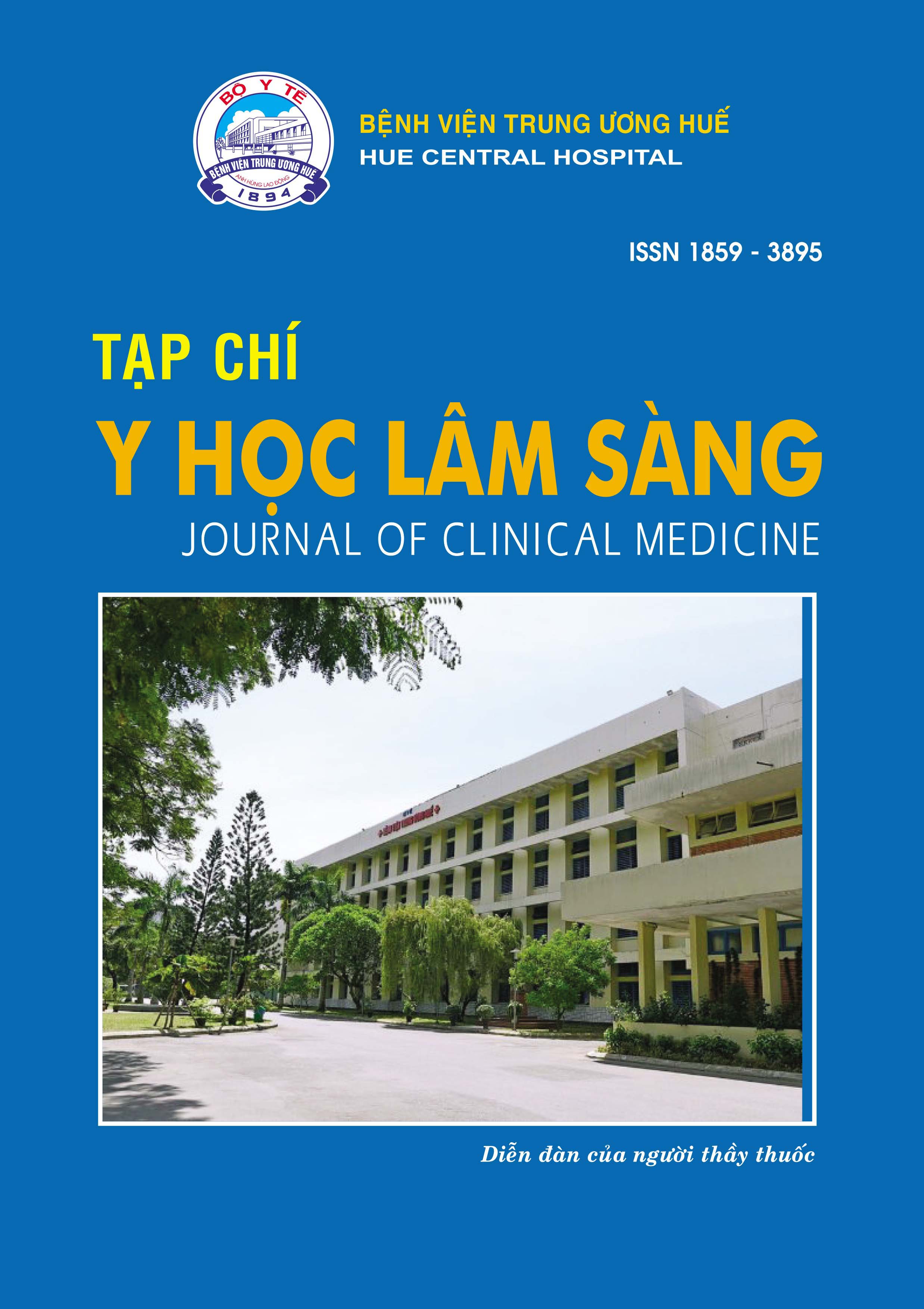Abstract
Objective: To compare the onset and duration ofsensory and motor blockade,success and complications rate of these two techniques.
Subjects and methods: One hundred and twenty patients undergoing upper limb surgeries at Hue Central Hospital from May 2016 to June 2017 were divided into two groups. Group I underwen tultrasoundguided supraclavicular brachial plexus block, group II with nerve stimulator. Each group received 25ml levobupivacaine 0.5% and 1/200000 adrenalin.
Results: The procedure time (9.82 ± 4.55 vs 14.73 ± 4.73 min), the onset of sensory (6.15 ± 1.60 vs 9.92 ± 2.88 min) and motor block (7.95 ± 1.05 vs 12.63 ± 2.15 min) in group I were significant shorter than in Group II (p < 0,05). The duration of sensory and motor block, (481.38 ± 116.66 vs 319.22 ± 143.14 min and 412.97 ± 107.32 vs 205.88 ± 48.96 min, respectively ) were significant longer in group I than in Group II (p < 0.05). The success rate (98.3% vs 90%) and complication incidence (1.7% vs 8.4%) were comparable between two groups.
Conclusion: Ultrasound guidance for supraclavicular brachial plexus blockade provided faster onset, longer duration of sensory and motor block, higher success rate with fewer complications in comparison withnerve stimulator technique.
References
Baloda R., Bhupal J.P.S., Kumar P. et al. (2016), “Supraclavicular Bbachial plexus block with or without dexamethasone as an adjuvant to 0.5% levobupivacaine: a comparative study”, Journal of Clinical and Diagnostic Research, 10(6), pp.9-12.
El Daba A.A., El Hafez A.A.A, Zeftawy A. et al. (2010), “Ultrasonic Guided Supraclavicular Brachial Plexus Block versus Nerve Stimulation Technique”, Tanta Medical Sciences Journal 5(2), pp.70-3.
Ilham C. et al. (2014), “Efficiency of levobupivacaine and bupivacaine for supraclavicular block: a randomized double-blind comparative study”, Rev Bras Anestesiol. 64(3), pp.177-82.
Mehta S. S., Shah S.M. (2015), “Comparative study of supraclavicular brachial plexus block by nerve stimulator vs ultrasound guided method”, NHL Journal of Medical Sciences. 4(1), pp.49-52.
Patil G., Sateesh G., Pattanshetty P. (2017), “Ultrasound-guided supraclavicular brachial plexus block with or without dexmedetomidine as an adjuvant to 0.5% levobupivacaine- a comparative study”, J. Evolution Med. Dent. Sci. 6(43), pp.3376-9.
Rastogi B., Arora A., Gupta K. et al. (2016), “Effect of midazolam and 0.5% levobupivacaine combination in ultrasoundguided supraclavicular brachial plexus block for upper limb surgeries - A clinical study”, The Open Anesthesiology Journal. 10(1), pp.27-33.
Ratnawat A., Bhati F.S., Khatri C. et al. (2016), “Comparative study between nerve stimulator guided technique and ultrasound guided technique of supraclavicular nerve block for upper limb surgery”, International Journal of Research in Medical Sciences. 4(6), pp.2101-6.
Rupera K.B, Khara B.N et al. (2013), “Supraclavicular brachial plexus block: Ultrasonography guided technique offer advantage over peripheral nerve stimulator guided technique”, National journal of medical research. 3(3), pp.241-4.
Veeresham M., Goud U., Surender P. et al. (2015), “Comparison between conventional technique and ultrasound guided supraclavicular brachial plexus block in upper limb surgeries”, Journal of Evolution of Medical and Dental Sciences 4(37), pp.6465-76.
Williams S.R, Chouinard P. et al. (2003), “Ultrasound guidance speeds execution and improves the quality of supraclavicular block”, Anesth Analg, 97(5), pp.1518-23.
| Published | 18-01-2025 | |
| Fulltext |
|
|
| Language |
|
|
| Issue | No. 49 (2018) | |
| Section | Original article | |
| DOI | ||
| Keywords | Gây tê đám rối thần kinh cánh tay, hướng dẫn của siêu âm brachial plexus block, ultrasound-guided |

This work is licensed under a Creative Commons Attribution-NonCommercial-NoDerivatives 4.0 International License.
Copyright (c) 2025 Journal of Clinical Medicine Hue Central Hospital

